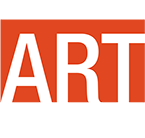A Refuge: Arthur Erickson
Co-curated by Clinton Cuddington and Hilary Letwin
Exhibition Opening: Tuesday, May 14, from 6 to 8 p.m.
Presented in collaboration with the Arthur Erickson Foundation, this exhibition explores Arthur Erickson in the context of his own home in Point Grey, Vancouver, where he lived from 1957 to 2009. Central to this exhibition are photographs from the collection of the West Vancouver Art Museum by Selwyn Pullan of Erickson in his home and garden. Surrounded by the objects that inspired him that were collected during his extensive travels, these photos are an intimate portrait of this well-known figure at home.
The house was converted from conjoined garages: a humble structure taking up a small portion of a large lot, which accommodated a verdant, Japanese-style garden. In 1981, Erickson said: “When I moved into this house, in 1957, I was teaching architecture at the University of British Columbia and collecting pottery. The things that surrounded me were more important to me…Architecturally, this house is terrible, but it serves as a refuge, a kind of decompression chamber. The nice thing about the garden is that I started it and it’s been doing its own thing ever since.”[1] The Arthur Erickson home and garden is owned and operated by the Arthur Erickson Foundation.
[1] Edith Iglauer, Seven Stones: A Portrait of Arthur Erickson, Architect, 1981, Harbour Publishing/University of Washington Press, pp. 30-31.
About Arthur Erickson
Arthur Charles Erickson was born in 1924 in Vancouver, where he grew up and developed an interest in and talent for painting. He attended the University of British Columbia, intending to embark on a career in diplomatic service. During World War II, he was assigned to the intelligence-gathering unit of the Canadian Army where he learned Japanese and served in India, Ceylon, and Malaysia. It was here that he became interested in Oriental art and philosophy.
A chance encounter with an article about Frank Lloyd Wright and his studio at Taliesin West deeply impressed Arthur Erickson, inspiring him to study architecture. Granted a travel scholarship upon graduating from the School of Architecture at McGill University in 1950, he travelled extensively in the Mediterranean, the Middle East, and Japan, a journey which influenced and enriched his views about culture, built form, and landscape.
Erickson taught architecture, first at the University of Oregon and then at the University of British Columbia. Recognized for his early, award-winning domestic architecture, he achieved national prominence with the competition-winning design for Simon Fraser University, completed with his partner Geoffrey Massey in 1963. Many notable commissions followed, including the Canadian Pavilion at Osaka World’s Fair, Robson Square in downtown Vancouver, the Museum of Anthropology at UBC, the Canadian Chancery in Washington DC, and the Museum of Glass in Tacoma, Washington, among many others around the world. Recognition of his work has included six Massey medals, three Governor General's Awards, the Royal Architectural Institute of Canada Gold Medal, the American Institute of Architects Gold Medal, the French Academy of Architecture Gold Medal, and the Order of Canada. Erickson died on May 20, 2009 in Vancouver.
Artist Talk
Presented in partnership with the West Vancouver Memorial Library.
Exhibition Partner: Arthur Erickson Foundation
Generously supported by Tricera Print:

With additional support from Caliper Studio, Measured Architecture, and Revery Architecture:

Additional support from Lois Milsom, Brock Mackay, and the Arthur Erickson Family.


